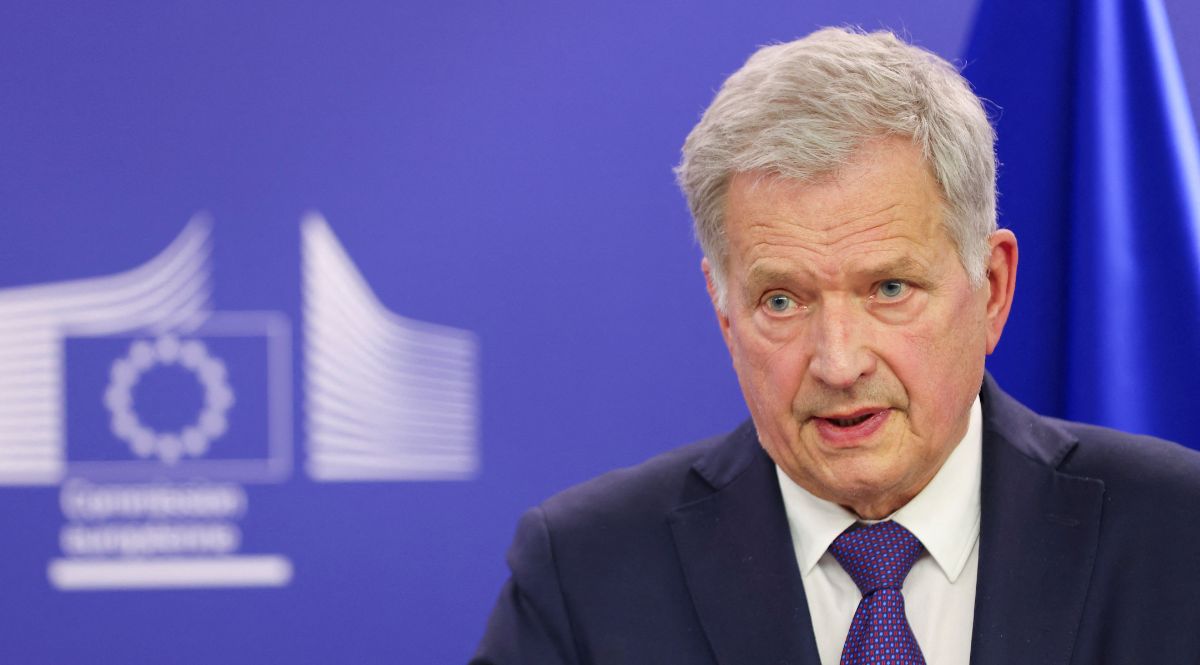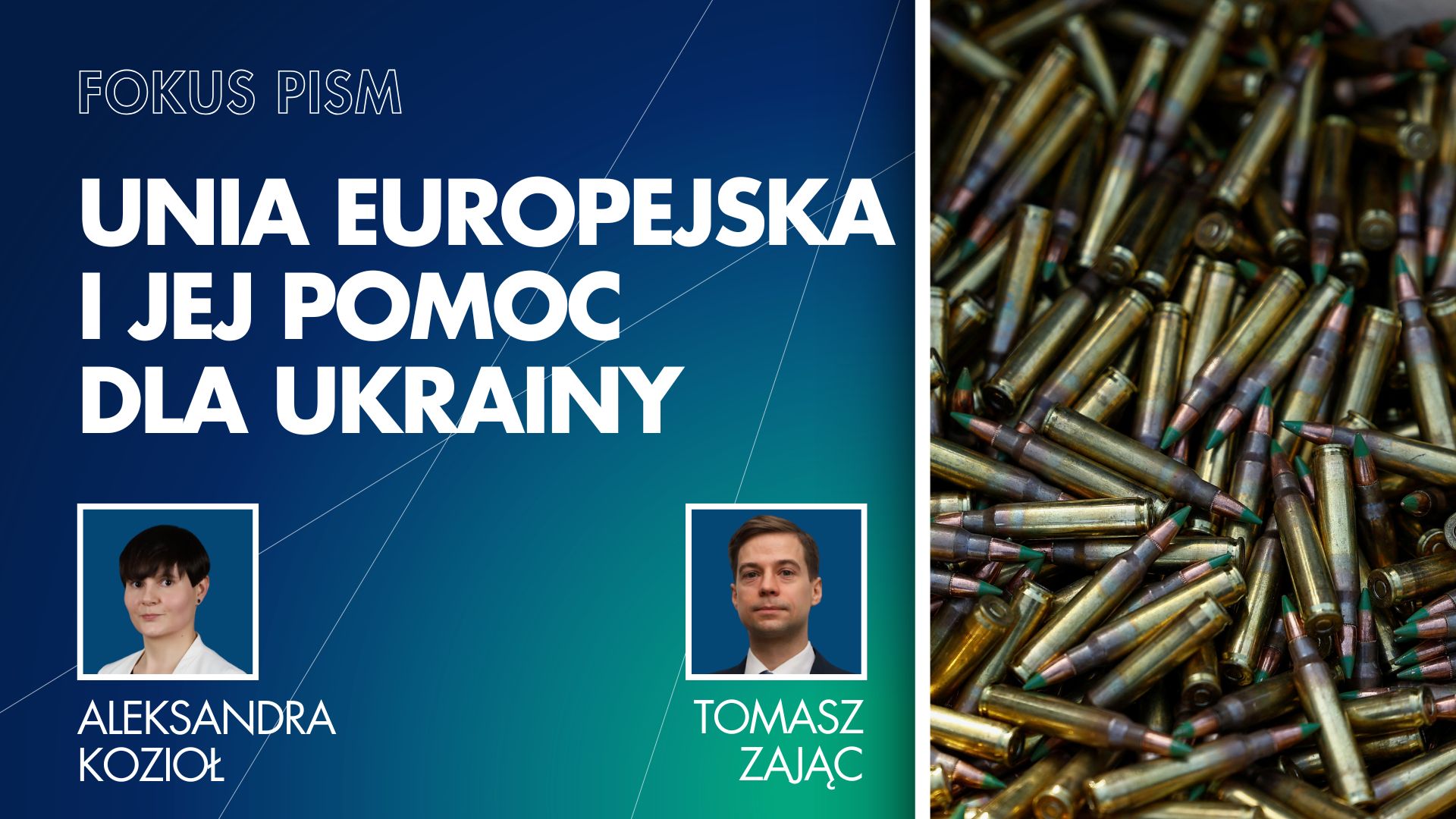EU Unprepared for Crises: Challenges in Implementing the Niinistö Report
A special report on civil and military preparedness should make the EU better equipped to deal with major security crises in Europe. However, implementation of the recommendations is complicated by their broad scope, some of which goes beyond the EU’s competences, and by the lack of resources for preparedness in the coming years. These issues should be taken into account when planning exceptional funding for European defence and when working on the new EU budget for 2028-2034.
 Johanna Geron / Reuters / Forum
Johanna Geron / Reuters / Forum
The European Council (EC) summit on 6 March set the direction for the development of European defence for the coming years, partly in line with the report published last October by former Finnish President Sauli Niinistö, “Safer Together: Strengthening Europe’s Civilian and Military Preparedness and Readiness”. This was one of three special studies requested by the European Commission and EU Member States, along with reports by Enrico Letta on the single market and Mario Draghi on competitiveness. Under the leadership of the new defence commissioner, Andrius Kubilius, work is also underway on a white paper on the future of European defence, due to be published in March, which is expected to include some recommendations on how to strengthen the EU’s defence capabilities.
The report was prepared in response to the increasing number and nature of threats in Europe, in particular the experience of the pandemic, the war in Ukraine, and natural disasters exacerbated by climate change. The report was written by the former Finnish president because Finland has a comprehensive emergency response system and the experience of its implementation and operation should serve as an example in formulating recommendations. The report aimed to strengthen procedures and mechanisms within the EU so that it can function effectively in the event of a major crisis.
Key Points of the Report
The report shows that the key issue remains the speed of decision-making and the coordination of operational activities, not only to respond effectively to specific threats but also to limit their escalation or proliferation. A comprehensive threat analysis, regular preparedness exercises, and civil-military cooperation through the European Civil Defence Mechanism would serve to review operational methods at the EU level. The report also proposes the operationalisation of Article 42(7) TEU on mutual defence and the complementary Article 222 TFEU on solidarity, as well as the harmonisation of response standards at EU, Member State, and regional levels. An important complement to measures at the EU level would be an EU-NATO emergency protocol allowing the two organisations to exchange information and complement each other’s capabilities, for example, in the event of war. The report also recommends implementing the mutual resilience in external relations with partners in the context of EU missions and operations, as well as the Global Gateway strategy.
The report makes concrete proposals to strengthen the EU’s capabilities in two main areas: the defence industry and resilience to hybrid attacks. In parallel with increased defence spending in national budgets, the EU’s common budget needs to be increased and at least 15% of spending should be devoted to security and defence issues (currently it is around 2%). The EU budget should also be made more flexible to facilitate the transfer of funds in the event of a crisis. Effectively countering hybrid threats also requires closer cooperation between the Member States in the field of intelligence analysis (SIAC), including within the Hybrid Fusion Cell, and by the establishment of a single EU intelligence structure. The report also recommends carrying out an effective assessment of hostile actors’ methods of operation and aligning EU tools with the results of such an assessment, including the creation of a dedicated EU network to counter sabotage.
The report also states that the basis for EU crisis preparedness is an adequate public response. To this end, it recommends extensive educational measures, including by encouraging citizens to be able to shelter and protect themselves for 72 hours in a crisis and by promoting participation in civil defence training. States’ responsibilities in this area should include setting up appropriate warning and information systems, and the EU should develop a strategy for building up reserves and mechanisms for replenishing them. The report also stresses the importance of improving public-private partnerships, which are needed to secure essential services and production, such as transport, communications, and energy. Parts of the infrastructure, such as pipelines and undersea cables, should be better monitored.
Challenges for the EU
Increasingly frequent and coordinated aggressive actions by Russia, Belarus, and China have raised threat awareness in the EU, as the effects of a hybrid attack on one country can easily spread to or be felt in others. While deepening cooperation in this area could bring significant benefits, the process is hampered by differences in states’ approaches to tackling hybrid threats. However, the security policy of the new U.S. administration is accelerating decisions to strengthen the European common defence.
The comprehensive whole-of-government and whole-of-society approach recommended by Niinistö is, however, too complex to deliver the expected results in the short term. This is because the EU’s competences in areas such as intelligence, warning and response systems, and civilian education and training remain limited, and countries are reluctant to transfer these competences to the EU level. Insufficient EU-level resources and the lack of financial incentives for states from the 2021-2027 common budget will only exacerbate this trend. The adoption of emergency financial measures discussed at the EU summit on 6 March will only partially address defence needs.
Another major challenge for the EU is to build partnerships to mitigate the impact of hybrid activities. Some countries, including those in the Eastern neighbourhood and the Western Balkans, are potentially interested in cooperation but do not have sufficient resources in this area. And then there are some members of the Alliance, such as Turkey, that are reluctant to institutionalise information-sharing between NATO and the EU. For example, the Commission is denied access to Allied defence capabilities, which makes it difficult for the organisation to plan its spending on the arms industry.
European societies also remain particularly vulnerable to foreign information manipulation and interference (FIMI), which, among other things, must be countered for the protection of democratic electoral processes. The EU still lacks coordinated response mechanisms to disinformation activities, despite the development of standards for their detection and analysis by the European External Action Service in 2023. The lack of strategic communication in the face of aggressive actions by, for example, Russia and China, undermines the effectiveness of Common Foreign and Security Policy and complicates the EU’s positioning vis-à-vis partners such as the U.S. in light of the ongoing negotiations to end the war in Ukraine.
Conclusions and Prospects
The Niinistö report is playing an important role in the debate on European security by offering a coherent and comprehensive approach to strengthening resilience. So far, the level of cooperation in this regard has been low, although the ability to respond to crises at the EU level could bring significant benefits. However, the around 80 detailed recommendations in the report could improve coordination between EU institutions and the Member States, which have so far taken sporadic and disjointed initiatives. As Niinistö’s recommendations are in line with the EU’s existing treaty and institutional system, they should be easier to implement.
Given limited resources, the transfer of responsibilities to the Union level may not produce the expected results in the short term. The process of building resilience would be more efficient if the EU focused first on establishing communication channels and common standards, and delegated the details of their implementation to the Member States and institutions directly responsible for ensuring the security of citizens and/or critical infrastructure. To this end, it would be useful to draw up a list of priorities based on the nature of the risks and linked to the frequency of their geographical occurrence. Implementation of the recommendations would then be better tailored to the challenges and easier to achieve in the short term, as the country or institution concerned would only have to address some of them in the first instance.
The Polish presidency offers an opportunity to shape the EU’s resilience priorities for the coming years. It is particularly important to emphasise the external dimension of the concept of mutual resilience, which should include Ukraine and the EU missions in Georgia, Armenia, and Moldova, among others. From Poland’s perspective, it would be beneficial to pay special attention to communication systems (including civil-military) and to strengthen social resilience, which can be facilitated by training for civilians, for example, in offices and schools. During its presidency, Poland can also push for a form of exceptional funding and a new EU budget that would encourage countries to implement the report’s recommendations.





(1).png)